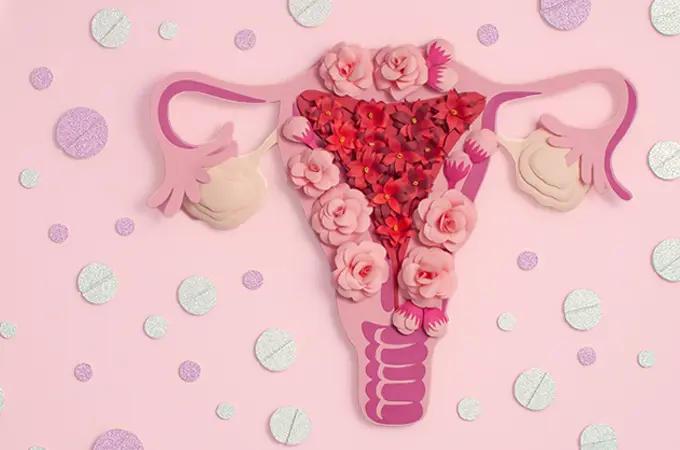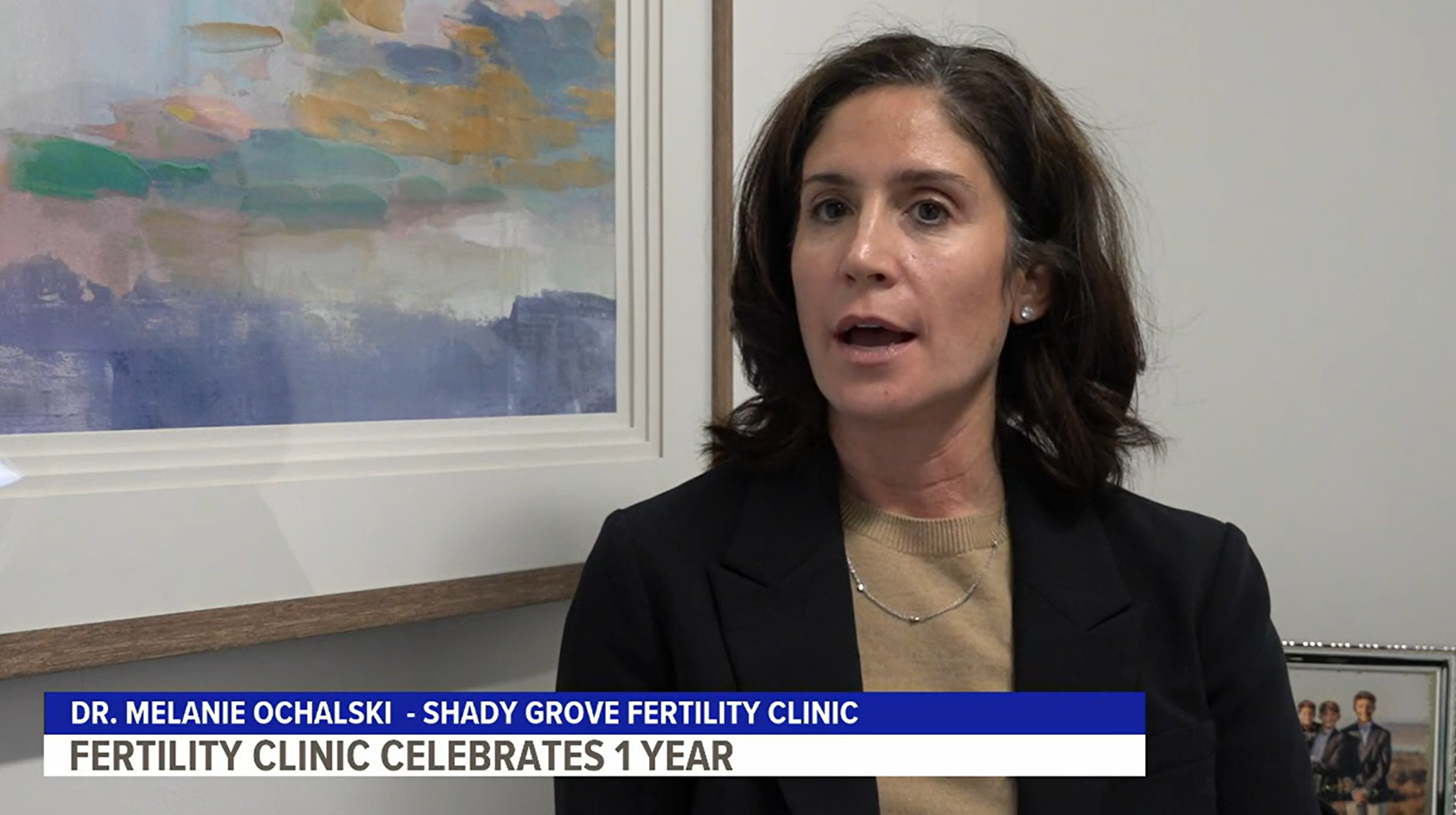Brad Behr is an astronomer and his wife, Virginia, works for the Food and Drug Administration. Though they tease each other about their nerdiness, their analytical minds served them well when it came to making hard decisions during fertility treatment. One of those decisions – sometimes the toughest for couples – was how many embryos to transfer during their cycles. Virginia and Brad credit Shady Grove Fertility’s success rates in helping them make a decision. In their case, Frozen Embryo Transfer (FET) rates were important in helping them build a healthy family.
Adventurous Beginnings
Virginia and Brad got married in 2003 when he was 33 and she was 27. They spent five great years experiencing life as a married couple, exploring ethnic restaurants and enjoying outdoor pursuits like hiking, before they started trying to have kids. After about a year of trying unsuccessfully on their own, they decided to get help from a physician.
Like many women, Virginia assumed it was her fault that she and her husband weren’t able to get pregnant. Throughout her life, she had had unreliable menstrual cycles and was sure this was a factor. Through testing with her ob/gyn, Virginia found out that she has Polycystic Ovarian Syndrome (PCOS), a disorder that causes infrequent or absent ovulation. Her ob/gyn recommended trying Clomid, the most common first treatment for problems with ovulation. When two cycles of Clomid didn’t work, her doctor suggested that Brad be tested as well.
A semen analysis showed that Brad had a low sperm count. Like many couples, Brad and Virginia had both male and female factors affecting their fertility.
“Finding out that we had two problems was really upsetting for me. I remember the day after we found out just being very, very down and pessimistic about our chances of having a child,” Virginia recalls.
Finding the Right Treatment
Virginia’s ob/gyn referred the couple to Shady Grove Fertility. Virginia and Brad met with Dr. Joseph Osheroff in the Columbia, MD office for their initial consultation.
Brad remembers, “We really liked Dr. Osheroff from the start. He was very upfront about our challenges and our possibilities. He made it clear that there were no guarantees, but he also gave us great hope.”
Virginia adds, “I trusted him because he wasn’t making any promises he couldn’t keep. Also, Brad and I are planners, and when we left his office that day, we felt like we had a plan.”
Due to Virginia’s PCOS and Brad’s low sperm count, the plan was to move directly to In Vitro Fertilization (IVF) with ICSI. Even though Virginia had been upset by their diagnoses, she now felt that it was a blessing to know exactly what was wrong.
“We knew there was a spectrum of treatments from low tech to more advanced,” said Virginia. “I felt really grateful that we knew that we needed IVF with ICSI because of our diagnoses. Otherwise, we might have spent years trying all those lower tech options that wouldn’t have worked for us.”
In their first IVF cycle, 33 eggs were retrieved and 12 fertilized. As they approached day 6 after their egg retrieval, they faced the difficult decision of how many embryos to transfer. Knowing about the option to freeze any additional embryos for use later made that decision easier.
“Brad and I are thorough,” Virginia laughs, “between all the research we did on our own and the information Dr. Osheroff and his staff had given us, we knew all about Frozen Embryo Transfer and we were hoping to have embryos left to freeze.”
Virginia and Brad felt confident about transferring a single embryo, called elective Single Embryo Transfer (eSET), because they knew that if the fresh embryo didn’t result in pregnancy, they would have another chance with any embryos that could be frozen.
“We knew the FET process was easier and much less expensive than a full cycle of IVF,” said Brad.
Unfortunately, Virginia did not get pregnant on this first try. She and Brad were upset, but they were comforted by the fact that they were able to freeze two embryos from the cycle. When they came back to use their two frozen embryos, one embryo didn’t survive the thawing the process.
“We were really disappointed about losing that one frozen embryo, but we still had the other one to transfer. That experience didn’t change our resolve to use FET then and in the future,” Virginia says. Sadly, the frozen embryo they transferred did not result in a pregnancy.
The Golden Batch
On their second cycle of IVF, 47 eggs were retrieved and 24 fertilized. “We got what we call ‘the golden batch’,” Virginia says. This time, they transferred two embryos and froze three. For two people who are both planners, they were both surprised to learn that and both embryos they had transferred and implanted. They were pregnant with twins. “We were kind of freaked out about it,” Virginia says.
However, before they were discharged from Shady Grove Fertility, they received the news that only one of the embryos was growing. “At about seven weeks, one of the embryos stopped growing, so we were left with one healthy, developing embryo,” Virginia says. That embryo became their son, Simon, who was born in 2008.
Growing their Family
When the couple decided they were ready to have a second child, Virginia and Brad went back to Dr. Osheroff to talk about using their stored frozen embryos.
“It was great to see Virginia and Brad again and help them expand their family,” explains Dr. Osheroff. “I spoke with them and encouraged them to do a cycle with their frozen embryos. Even though they had been through an FET cycle previously, we once again discussed the benefits of using frozen embryos. The cycle preparation is easier with less medication and the success rates are very close to those of a fresh cycle. I felt that they would be successful by utilizing a frozen cycle.”
Since Virginia had been through one FET cycle before, she knew what to expect. She had a pre-cycle evaluation and started on birth control medication, just like she did with her IVF cycles. Compared to a fresh IVF cycle the protocol for FET was much easier. She had many fewer injections and only one additional visit – to check on her uterine lining – before the day of embryo transfer. Also, the FET cycle cost them less than half what their IVF cycle had cost.
“FET is a breeze compared to IVF,” Virginia says. “As the woman, I can easily say that not having to receive so many shots, not having blood drawn every day and getting to work late because of the doctor appointments made it exponentially easier than an IVF cycle. Also, for me, the egg retrieval was the most invasive and physically demanding part of IVF. With a FET, you don’t have to go through an egg retrieval. The physical and emotional stress of FET was so much less than IVF. It didn’t even compare.”
Because of their experience with the previous cycle, they were concerned about the chances of having twins on this round. They discussed this concern with Dr. Osheroff and they all agreed that the best course of action was to transfer only one embryo this time.
“Although it was just a hunch, we thought that the second batch of embryos had been so good that we probably only needed one to get pregnant…and we were right,” Virginia says. Their second son Everett was born in 2010.
The couple admits they had reservations about FET at first.
Brad says, “We worried about whether the frozen embryos would be the same quality as the fresh ones. Were there enough studies about the long-term outcomes of using frozen embryos? But we were reassured by Dr. Osheroff and by our own research that everything would be fine. Judging from our sons, one who was from a fresh embryo and one who was from a frozen embryo, there is no difference in terms of their abilities and health.”
“The only thing is that we joke about how our son who came1 from the frozen embryo is much more able to tolerate the cold than his brother,” Virginia chuckles. “And it’s true too.”
“The best benefit of FET,” Virginia adds, “is that it allows you to use one embryo at a time to avoid the risks of twins. We really wanted to do everything we could to have a healthy baby, and we knew that having one baby instead of two would be the best way to ensure that.”
“My advice to others thinking about how many embryos to transfer per cycle is to look at the statistics,” said Brad. “I know it’s hard to make a conservative or logical choice in a situation that is so important and emotional, but it can really provide a great pay-off for your family.”
The Payoff
Virginia and Brad have passed on their wonderful mixture of braininess and adventurousness to their kids. “Being a parent is fantastic. It’s a lot of hard work, but we have kept doing all the things we love. We just take the boys along with us,” says Virginia.
“We have referred a lot of people to Shady Grove Fertility,” Virginia says. “Dr. Osheroff and the whole staff provided guidance and hope to us at the most vulnerable time in our lives. We trusted them and they helped us make our dreams come true!”





